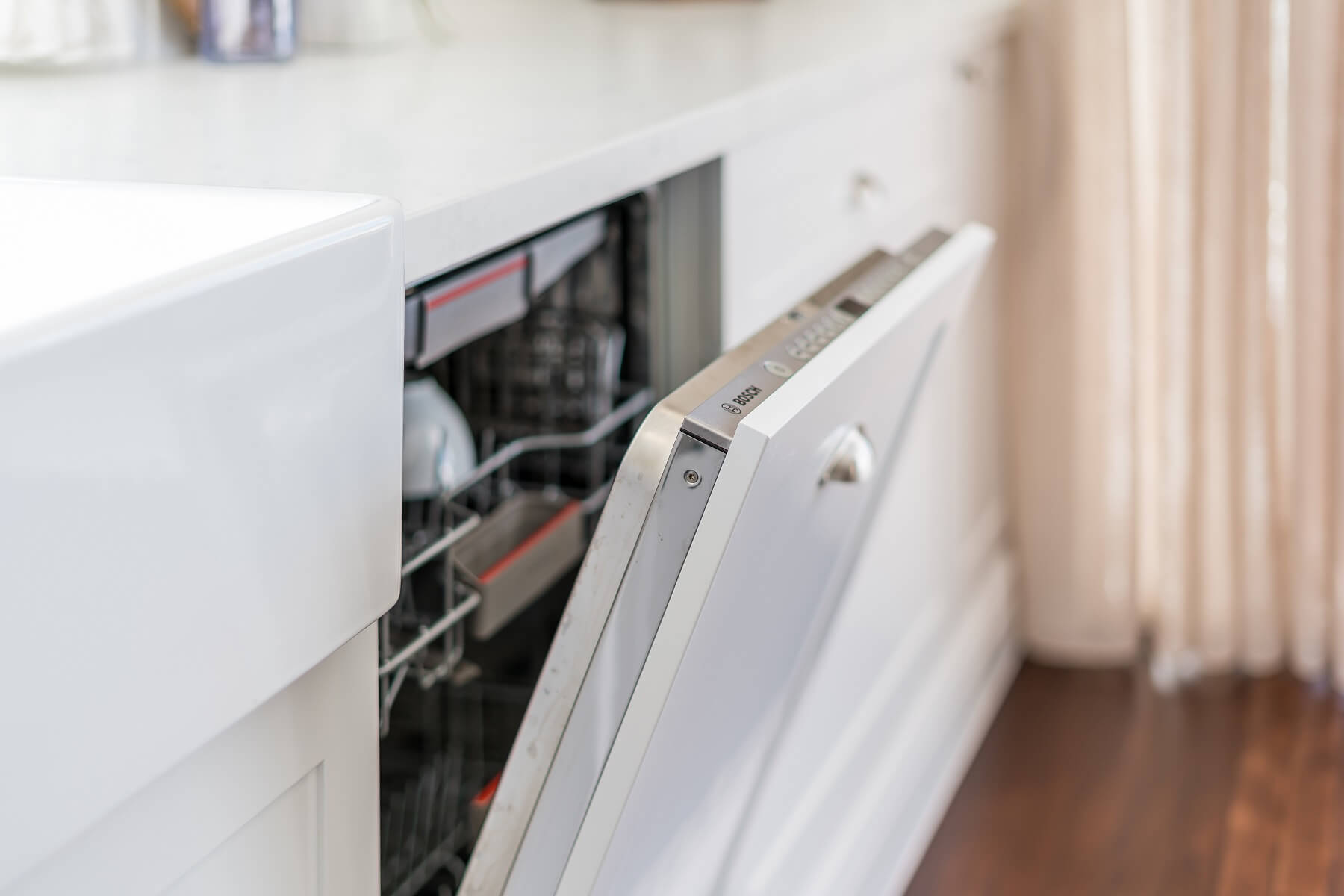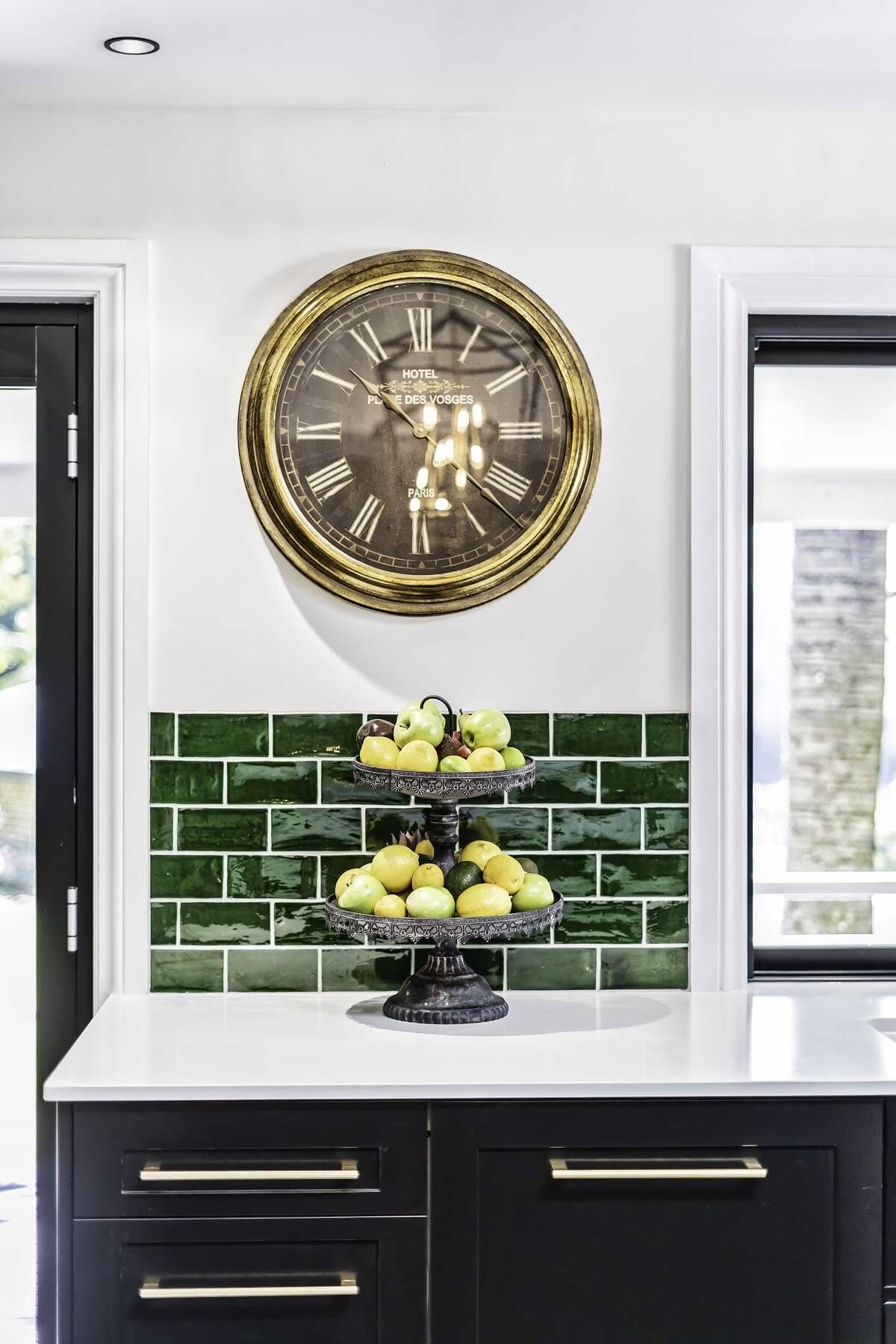Introduction to Colour Psychology in Kitchen Design When embarking on a kitchen renovation or design…

Are you renovating or planning a kitchen in a new build?
THEN finding the ideal spot for your dishwasher is a must!
Whether you’re looking to fit a dishwasher into your existing kitchen or you’re designing a new kitchen from scratch—the placement is very important for both the look and feel of your space. Where the dishwasher is positioned will affect the overall functionality of your kitchen and therefore, this decision should be given careful consideration in order to avoid regretting the dishwasher’s location upon completion.
Consider the below points prior to making your dishwasher placement decision to ensure you’re making an informed choice.
1. Place your dishwasher next to the sink:
You want to try and place your dishwasher right next to your kitchen sink, or as close to the sink as possible. This is because your plumbing for the sink can also be utilised for the dishwasher which makes the process more cost-effective and simplified. Of course, it’s also the most convenient placement in terms of functionality—as we tend to scrape leftovers from dishes, rinse them and load them straight into the dishwasher from the sink. By placing your dishwasher next to the sink, you will save time on those mundane everyday tasks and increase the productivity and flow in your kitchen.
TIP: Your dishwasher should be placed on the opposite side of your dominant hand. For example, if you’re right-handed, place your dishwasher on the left of the sink or vice versa. This will make daily scraping, rinsing and loading much easier!
2. Keep your dishwasher close to storage:
Apart from placing your dishwasher next to the sink, you should also keep it close to your crockery and cutlery storage. This allows you to remove dishes from your dishwasher and conveniently place them directly into their allocated storage areas without having to move around too much.
TIP: Always remember—every kitchen must have a functional and practical layout to make it utilisable. The location of your dishwasher plays an important role in making your kitchen a pleasurable area to work in. By placing your dishwasher next to the sink and close to storage, you’ll reduce your kitchen workload dramatically.
3. Make sure that there is freedom of movement in your kitchen:
Another important point to consider when choosing a location for your dishwasher is movability in your space. Make sure you have plenty of room to move freely around your kitchen, whether your dishwasher door is open or closed. To find the perfect position, visualise your daily tasks in the kitchen prior to deciding on your ideal location. Think about how you work and move around this area on a day-to-day basis. This will give you a good idea of where to place your dishwasher to allow smooth functioning in this busy, shared space.
TIP: Avoid placing your dishwasher close to the cooktop or near the kitchen entry. These are high traffic areas; and if these areas are obstructed by a dishwasher it will decrease the efficiency of your kitchen exponentially.
In summary, prior to deciding to add a dishwasher to your kitchen—you must first brainstorm and find the ideal position to place it based on how you utilise your space—this may be highly individualised—some even like to map out their space and work with this design for a few days to be absolutely certain of their placement choice. Ideally, dishwashers should be placed next to
the kitchen sink—either on the right or left-hand side, as well as being close by to your main storage cabinets and drawers. It is also very important to ensure that your dishwasher placement allows freedom of movement throughout the space especially if this is a family kitchen as often there is more than one person occupying this space at a time.
By following these tips, you will certainly make your life easier and create a more practical and highly functional kitchen environment that can be enjoyed for many years to come. Contact BJF Joinery today to discuss your renovation plans and get expert advice.


